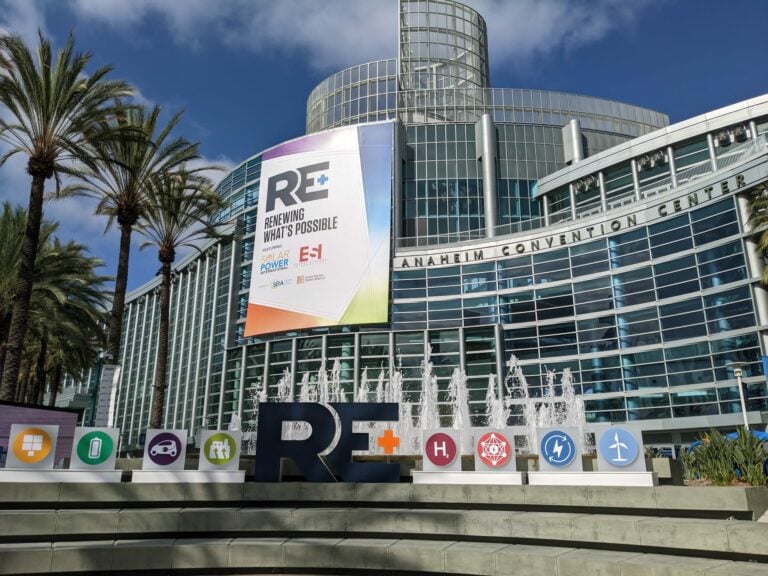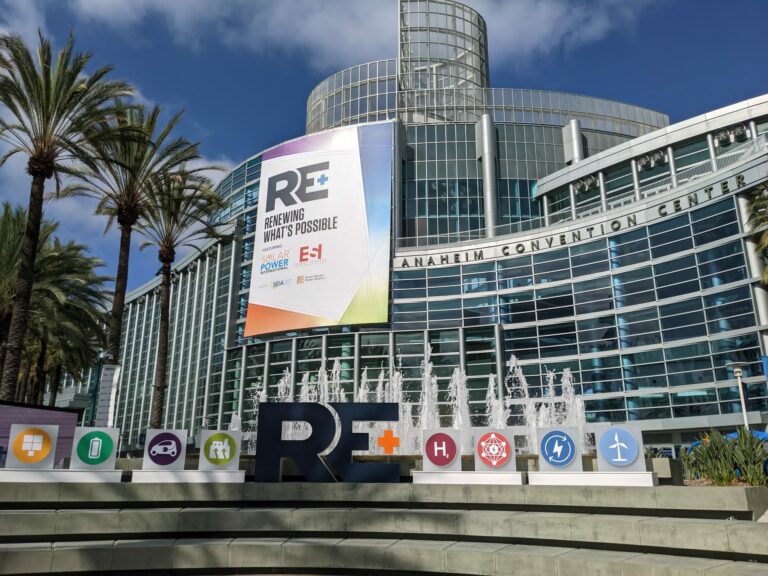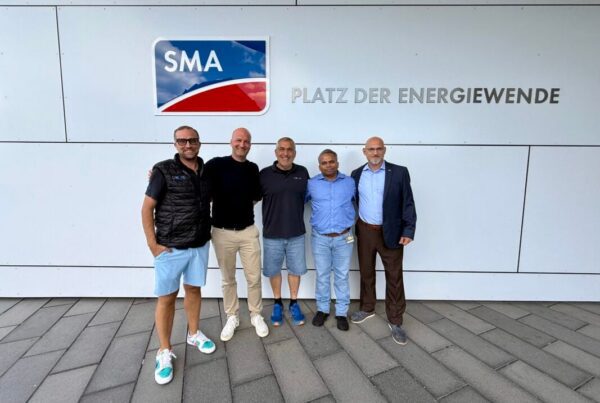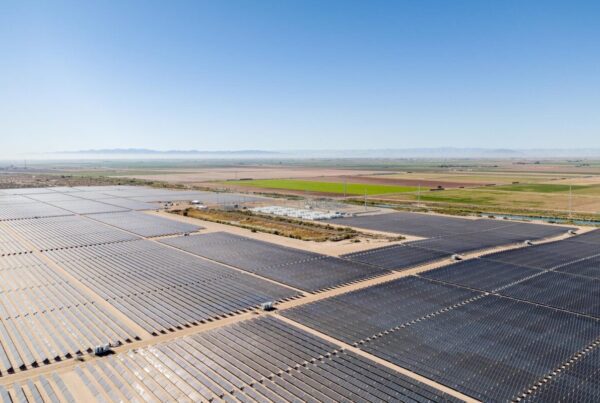
From module makers and BOS producers to utility-scale developers and community solar companies, the Inflation Reduction Act (IRA) has taken centre stage at this year’s RE+ in Anaheim, California.
The annual tradeshow, which incorporates the Solar Power International event, has returned for the first time in three years in full swing, with many exhibitors telling PV Tech that it is the biggest and most exciting show they’ve attended.
This is partly because of pent up demand over the past two years but anecdotal evidence suggests a huge reason is the fortunately timed passage of the IRA in August in the run up to the show.
And the IRA truly has dominated conversations here. While there is still some uncertainty as to certain aspects of the Act and how they will be implemented, companies across the solar supply chain have told PV Tech that the US$369 billion bill is a gamechanger for the US solar sector.
A week after US solar industry players gathered on the White House lawn to celebrate the IRA, the whole industry has gotten together to celebrate what feels like a new dawn for US solar.
Module manufacturers all the way down to smaller BOS producers have told PV Tech that not only has demand increased following the passage of the IRA, but that they were also considering capacity expansions in the country to cater to that demand.
The IRA contains vital manufacturing credits that have been designed to onshore and build out a US PV manufacturing base, with BloombergNEF calling the IRA “the best chance the US has” to build out a solar manufacturing base. Under the proposals, the solar manufacturing tax credits are as follows:
- Modules would receive US$0.07, multiplied by the capacity of the module (on a per direct current watt basis)
- Thin-film or crystalline PV cells would get US$0.04, multiplied by the cell’s capacity (on a per direct current watt basis)
- Wafers would secure US$12 per square metre
- Polymeric backsheets would receive US$0.40 per square metre
- Solar-grade polysilicon would get US$3 per kilogramme
Whether the US will be able to build out all the stages of its solar supply chain in sufficient scale and time to meet its climate targets is another questions, however. But manufacturers at the show have nonetheless celebrated what the IRA means for US manufacturing potential.
On top of this, developers, which can now enjoy a 30% investment tax credit (ITC) as well as extra “adders” for the next 10 years, told this site that the IRA will turbocharge the entire sector, from small residential installations all the way to large utility-scale projects.
More to follow on developer reaction to the IRA…






